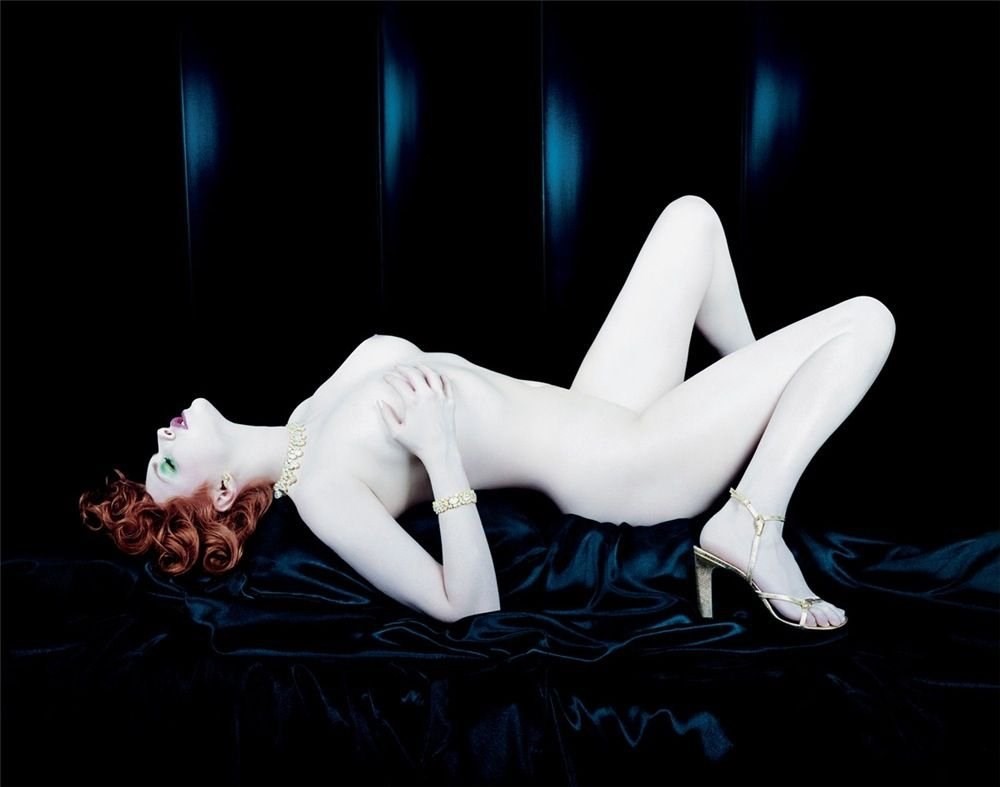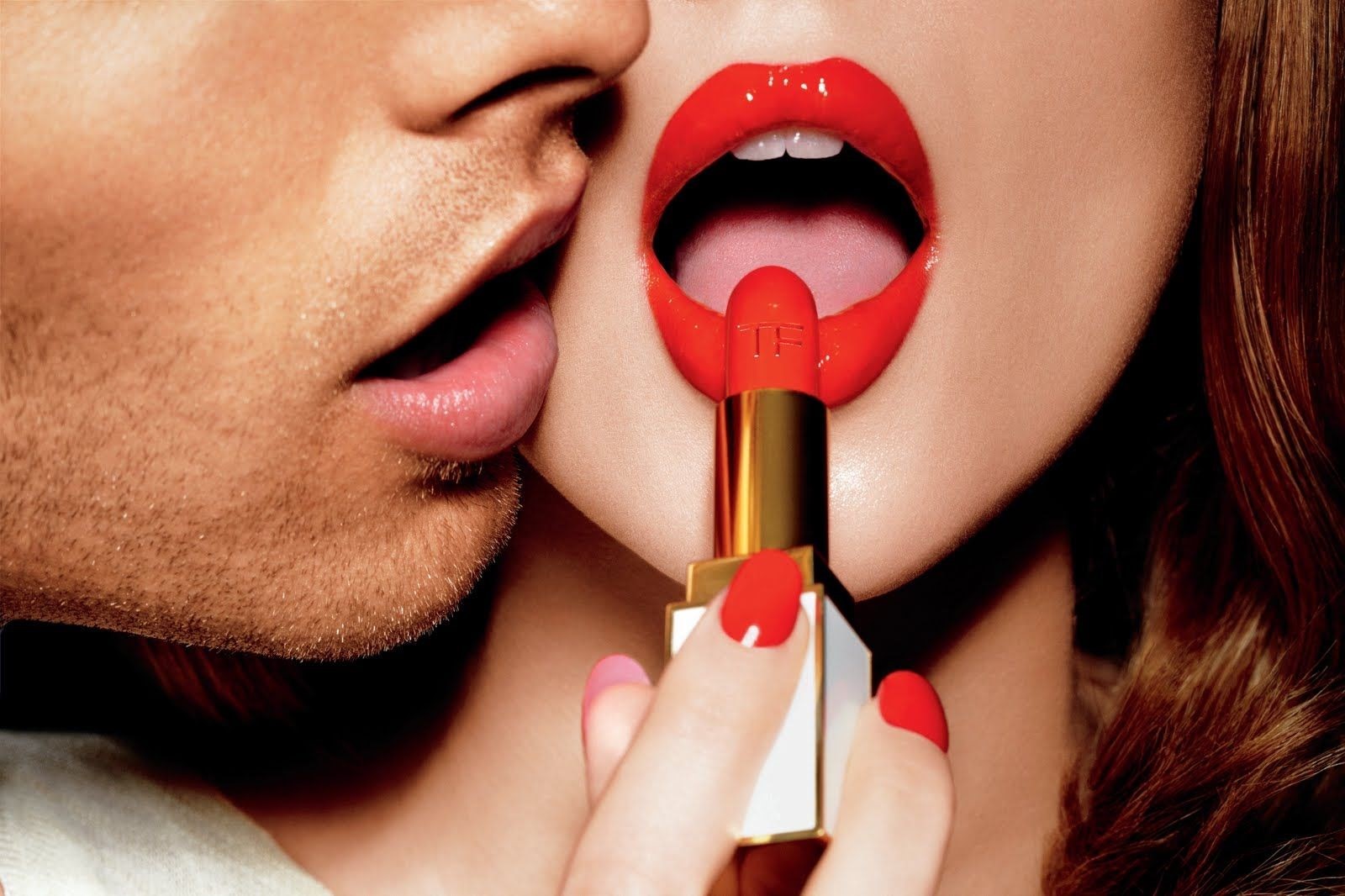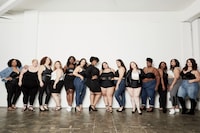Sex sells in the beauty industry, with physical attraction the driving force behind most of our grooming habits – but things may be changing
Everyone likes to believe that when it comes to true love, it’s what’s on the inside that counts – but physical attraction will always play a part in who we choose to sleep with and start relationships with. For most of history, beauty and grooming regimens have existed to enhance sex appeal and attract a mate, with certain beauty ideals elevated by different cultures, and different types of beauty appealing to different groups. Avant-garde subcultural beauty might be about self-expression, for example, but it also helps identify similarly-minded people to befriend or hook up with.
Unfortunately, when so much of modern dating involves swiping through pictures on an app, you could argue that physical attraction is more important than ever. But this might all be changing soon. Sex technology in the form of VR, AR and robotics promises to provide not only sexual fulfilment, but also emotional companionship – and as it continues to evolve, the possibility that we may no longer need to seek out partners IRL becomes increasingly real. If this were to happen, we may not even need to alter our physical appearance to get laid. So if getting sex was no longer a primary driving force behind beauty standards and grooming habits, what would we all choose to look like?
Of course, it’s unlikely that beauty rituals will cease to be important altogether. After all, they are as much about social inclusion and success – “poorly groomed” women stand to earn 40 per cent less than their made-up counterparts, while attractive people are over 20 per cent more likely to be called back for a job interview – as they are about attracting a partner. But grooming routines might continue to become even less about sex and more about creativity, self-care, social status and following trends.
“How we physically present ourselves is becoming increasingly liberated from traditional beauty standards,” says future trend forecaster Geraldine Wharry. Wharry points to Doja Cat, who recently spoke out about the expectations people have of her to look “fuckable” after shaving off her hair and eyebrows, as an example. “Doja Cat expressed the fact that she didn’t want to be objectified and just that she really didn’t like her long hair sometimes,” Wharry continues. “I think we’ll see more and more young women perhaps shaving their heads and favouring their personal freedom. It is really liberating and it brings joy to people at a time when life is hard for a lot of people.” Many grooming rituals that women are pressured to partake in involve pain and discomfort – waxing, laser hair removal, bleaching etc. – so centring joy rather than oppression in our beauty routines can be an act of defiance against heteronormative ideas of sexual attractiveness.
Tech has already started shaping our relationship with physical appearance and sex. Although social media has given rise to a thriving experimental make-up and anti-beauty subculture, it is also putting huge amounts of pressure on us to look a certain way, with experts placing the blame on social media for young people increasingly undergoing cosmetic procedures. Many of the most popular procedures reflect features traditionally considered sexually attractive in real life – think BBLs and boob jobs. Kylie Jenner’s decision to get lip fillers – which arguably influenced beauty culture for the past decade – was rooted in insecurity about her thin lips after a boy in her class said she looked like she wouldn’t be a good kisser. There’s an undercurrent of wanting to be sexually desirable even in digital filters and online beauty trends.
That said, not all beauty rituals are about sex. Beauty is often a way to experiment with identity and play around with self-expression, to be creative. For may people it’s about matching how you feel on the inside with what you look like on the outside. But that’s not how make-up has been marketed for the majority of the last century. The beauty industry has long capitalised on and perpetuated the idea that women need to look a certain way in order to attract and keep a man.

“Just as he dreamed her eyes would be” a wartime Maybelline ad for eye make-up writes. “New Yardley Lip Licks taste like Grandma’s favourite recipes. So kiss him in his favourite flavour,” a slightly Freudian lipstick campaign from the 70s entices. This kind of marketing taps into one of our deepest primal fears: if you don’t buy this product, you’re going to die alone. Today, billboards and Instagram ads show models pouting lustfully in red lipstick or naked and wrapped up in silk sheets to promote designer perfume. And while the messaging has been repositioned, with rhetoric involving personal empowerment and self-care currently in vogue, the aesthetics they promote still perpetuate mainstream ideals about beauty and sexual attractiveness.
Virtual dating might sound more than a little dystopian but, at its most ambitious, it could transform the lives of people who have barriers to forming sexual and romantic partnerships with others, such as those living with physical and mental health issues or the elderly. For others it could come to be viewed in the same way that sex toys are today – a way to get sexual fulfilment without the need for a partner. This could impact our perception of physical beauty when seeking a partner, especially when virtual worlds are involved.
“I think the movie Her was quite indicative of how someone might get attracted to an operating system,” says Wharry, “so sexual attraction could even be detached from appearance. It could become something where you become first emotionally attached to a type of abstract life form which might be attractive to some pansexual and demisexual people. It’s not necessarily that it’s going to change our perception of beauty for everyone.”
Two people could meet in a virtual universe, have virtual sex and form an emotional bond. If they decide to meet face to face, they could realise that one or both of them looks nothing like their avatars. This could be a dealbreaker for some. But if a deep emotional connection is already established and they’re having great virtual sex, it could lead to a fulfilling long-term relationship where personality and connection really do matter more than IRL physical appearance from the very start. People could exchange the time and money they spend on real-life beauty rituals to focus on their appearance to attract a partner in virtual spaces.

No matter how much we begin to live our lives online, however, taking care of your body and health in real life will ultimately always remain important for a feeling of self-worth, argues Michael Nolte, creative director of beauty insights platform BEAUTYSTREAMS. “Without wanting to over-simplify, there are two main functions of beauty: feeling good and seduction. Most consumers constantly switch back and forth between one function and another, whether consciously or unconsciously,” he says. “In the past, the mainstream goal of beauty and fashion was to show social status and attractiveness. In today’s world, ethical behaviour, sustainability and conscious living have entered mainstream values so more humble, natural and approachable looks lead.”
Elizabeth Dell, sex educator and founder of intimacy app Amorus, echoes this sentiment, stating that beauty standards are often tied to what we find difficult to attain. “In the future, beauty may be more tied to authenticity or vulnerability, as we are already seeing with social media, where it’s harder to find things that feel ‘true,’” she says. “As we get more and more distracted by technology, focus and attention to your partner might also become top elements of beauty. Additionally, we may value features that are different, and thus more ‘authentic’, much more than those that are classically beautiful.”
Authenticity and vulnerability are noble traits to seek in a partner, but they won’t replace the importance of physical beauty entirely. Physical attraction has existed since the beginning of time so it’s not going anywhere. However, it’s likely the trend for more experimental beauty will continue and expand as beauty ideals shift and technology evolves, moving away from homogenous heternormative ideas of sexual attractiveness. In the future, it might be possible to find virtual emotional and sexual connections without having to spend hours priming yourself for a first date. When it comes to having a fulfilling and active sex life, looks might not matter at all if all you want is simulated intimate physical connection and a mind-blowing orgasm.

